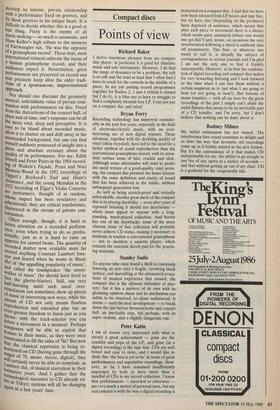Bryan Ferry
Recording technology has improved consider- ably in the past few years, especially in the field of electronic/electric music, with an ever- increasing use of new digital systems. These advances, together with the declining quality of vinyl (often recycled), have led to the need for a better method of sound reproduction than the conventional gramophone record, with its atten- dant surface noise of hiss, crackle and click. Although some aficionados will tend to prefer the aural texture of a good-quality vinyl press- ing, the compact disc presents the home listener with the same definition and clarity of sound that has been Aieved in the studio, without subsequent generation loss.
As well as being scratch-proof and virtually unbreakable, another great merit of the compact disc is its playing durability — even after years of repeated listening it should not deteriorate — which must appeal to anyone with a long- standing, much-played collection. And herein lies one of the drawbacks: some of the more obscure items of that collection will probably never achieve CD status, making it necessary to maintain in tandem a conventional gramophone — not to mention a cassette player, which remains the essential sketch pad for the practis- ing musician.


























































 Previous page
Previous page